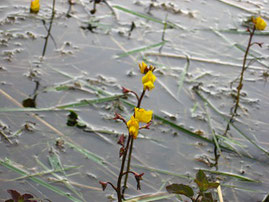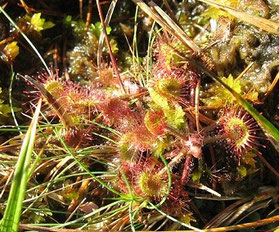Carnivorous plants for Growing Outdoors.
What is different about a Carnivorous plant?
Carnivorous plants are different in these three ways to other plants
- Capture and kill prey 2. Digest the prey, 3. Live off the nutrients digested from the prey
Carnivorous plants feed themselves in a totally different way to normal plants. They eat things like insects, spiders, crustaceans and other small soil and water-living invertebrates. Some species even kill and eat lizards, mice, rats, and other small vertebrates.
Carnivorous plants catch their prey using specialised leaves that act as traps. Many attract prey with bright colours, extra-floral scents, guide hairs and sometimes leaf extensions. Once they have trapped and killed the prey they digest it and absorbs the nutrients from the corpse.
To see more information about Carnivorous plants and purchase options for The Venus Flytrap and Terrarium click on the pics
Where do Carnivorous plants come from and how do I feed them?
This is where Carnivorous plants come from and how to feed them?
For this article I am mainly writing about three species of carnivorous plants native to the UK. They are Sundews, Butterworts and Bladderworts. I have also included a bit about the Cobra lily, Trumpet pitcher and probably the best known carnivorous plant of all. The Venus Flytrap.
Carnivorous plants come from a range of climates including tropical Asia, Australia, Europe, Mexico and Alaska. They use food collection mechanisms that include traps, pitchers, sticky pads or suction techniques to trap and extract food from other living organisms.
As long as Carnivorous plants have water, light, soil, temperature and insects, they will trap all the food they need to survive, so it isn't normally necessary to feed outdoor grown plants with fertiliser.
Carnivorous plants that can be grown in pots or in a bog garden.
The following species of carnivorous plants can be grown outside all year round, although in extreme cold weather they will need protecting by mulching. If you are growing them in pots they can be moved into the garage or garden shed.
There aren't many plants in this section, but enough to add a lot of interest to your bog garden or pond edges. I prefer to plant them in pots pushed
into the bog garden, so that I can bring them inside in winter.
How to make a simple Bog garden for your Carnivorous plants explained here
how to build Bog garden
Bladderworts: There are 3 different species
- Utricularia vulgaris is found submerged in still, quite deep, fresh water. It does not have roots and gets nutrients from bladders that trap insects. This is the largest of the 3 with yellow flowers appearing from June to August.
- Utricularia intermedia likes peatier water than vulgaris and is the middle sized bladderwort. Like vulgaris it has yellow flower.
- Utricularia minor likes similar conditions as intermedia and is the smallest species flowering from June until September its flowers are also yellow.
Sundews: again there are 3 different species,
- Drosera rotundifolia is the species pictured. Found throughout the UK it flowers June to August, this species has small round leaves and is found on both mountain bogs and fenland throughout the UK.
- Drosera anglica is commonly found in the east of Scotland and northern UK.
- Drosera longifolia is our other native Sundew
Sundews have modified leaves covered with red hair that secrete a sticky substance for catching their prey.
Butterworts: the 3 different species are,
- Pinguicula vulgaris is still found on bogs, fens, wet heaths and moors all through the UK, grows up to 15 cm across and has a purple flower (not shown in the photograph). Flowers May to July.
- Pinguicula grandiflora is found in similar habitats to vulgaris, but larger in size and with larger flowers, but is only found in Cornwall
- Pinguicula lusitanica is found in bogs and wet heaths in the western part of the UK. It is a little bit smaller than vulgaris and is the only species of our native species to winter as leaf-rosettes. Butterworts use sticky, glandular leaves to entice, trap, and absorb insects
Venus Flytrap the best known carnivorous plant
The Venus Flytrap is probably the best known of all carnivorous plants, it is an insect eating plant native to the subtropical swampland of the United States East coast. It grasps its victims, mainly insects, with its leaves triggered by minute hairs that exist on their internal surfaces. The trapping arrangement is highly sensitive and can make out between non-food items and live prey. As an insect strokes two-trigger hairs in sequence within a gap of twenty seconds or strokes one hair twice in quick succession, the trap lobes shut instantaneously trapping it.
The trap doesn't close all of the way at first. It stays open for a few seconds to allow very small insects to escape because they wouldn't provide enough food.
You can't fool the plant if the object is not live food, the trap will reopen and 'spit' it out.
There is no escape! The more the trapped prey struggles the more aroused the lobe inside becomes forcing the lobe edges to come closer and hermetically seal the trap. Enzymes are secreted from the glands and the digestion process begins.
The Venus Flytrap can be an easy carnivorous plant to grow, if you get the basics right such as, wet roots, high humidity, full sunlight, and poor, acidic soil. A recommended soil mixture is one that contains sphagnum moss and sand. Do not add fertilizer or lime.
High humidity is important and the best way is to plant it in a terrarium with a small opening like an old aquarium or fish tank.
The best advice I can give is to follow the instructions you get when you buy your Venus Flytrap. Click on the picture for more information.
Two More carnivorous plants that can be grown in a bog garden.
Darlingtonia californica (cobra lily)
Cobra lilies have variegated pitchers at the end of the leaves. The pitchers are mottled green in colour and survive for two to three years. Flowers appear in spring before new pitchers and are greenish yellow or brick red. Seedheads last for a while and are good for drying. Grow outdoors in a cool, shady, bog garden. You will need to protect from frost in winter outdoors, or if planted in pots move to a frost-free frame or greenhouse.
Sarracenia (North American or trumpet pitcher), especially Sarracenia purpurea.
A group of hardy to nearly hardy plants with pitcher-shaped leaves, sarracenias range in height from prostrate forms to those with pitchers 3ft tall. Pitcher colours vary from light yellow through green to purple. Flowers are formed from early spring to midsummer some are scented and are suitable for cutting and drying. Grow outdoors in a bog garden. You will need to protect from frost in winter outdoors, or if planted in pots move to a frost-free frame or greenhouse.
shade / herbaceous borders / clay / window boxes / pathways / Winter colour / dry / sandy soil / chalky soil / slopes / bog gardens / ground cover / Low maintenance / home
Writing your first book or novel? This new website provides advice and tips to help write, edit, publish, market and promote it https://www.faircop.com/







